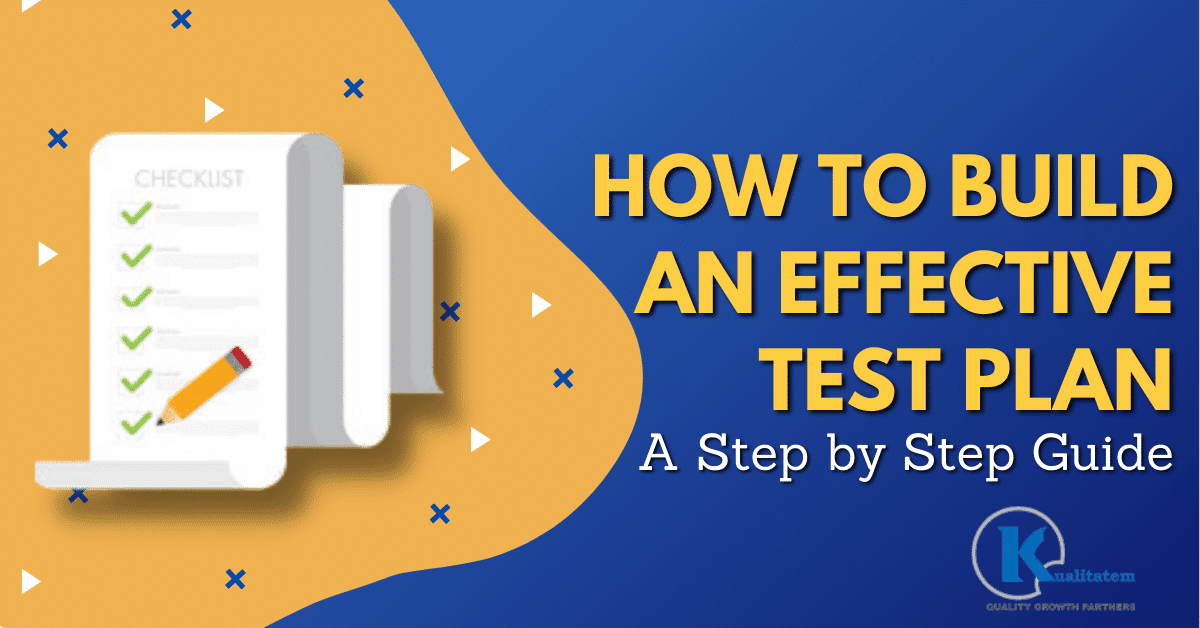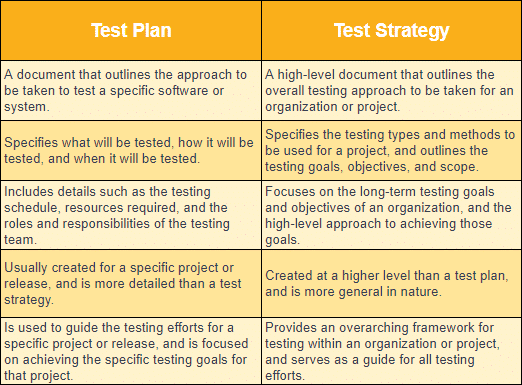How to Build an Effective Test Plan: A Step-by-Step Guide

- March 10, 2023
- admin
Building an effective test plan is an essential aspect of software testing that ensures high-quality software delivery. A comprehensive test plan helps to identify potential issues early in the development process, provides clear guidance to testers, and helps to meet project objectives. However, creating a detailed test plan can be a daunting task, especially for those new to the field of software testing.
This guide aims to provide a step-by-step approach to building an effective test plan, starting from defining the scope of testing to selecting appropriate testing techniques, identifying the test environment, and developing a detailed test schedule. By following this guide, testers can ensure that their testing efforts are focused on meeting project goals and objectives, identify defects early in the development cycle, and deliver high-quality software to end-users.
What is a Test Plan?
A test plan is a detailed document that specifies the goals, parameters, strategy, tools, and schedule of a software testing project. It offers a thorough explanation of the testing procedures that will be used to guarantee that the software satisfies the necessary standards and specifications for quality.
The test plan serves as a guide for the entire testing process, from defining the test objectives to executing the tests and reporting the results. It provides a clear understanding of the testing goals, testing techniques, test environment, and testing schedule. It also helps to identify the risks and challenges associated with the testing process and provides a roadmap to mitigate those risks.
What Distinguishes a Test Plan from a Test Strategy?
What distinguishes a test plan from a test strategy? This is the most common asked question especially among the new testers. Now let’s compare the two in this area.

In summary, a Test Plan is a detailed document that outlines the approach to be taken to test a specific software or system, while a Test Strategy is a high-level document that outlines the overall testing approach to be taken for an organization or project. The test plan is more detailed and focused on achieving the specific testing goals for a particular project, while the test strategy provides an overarching framework for testing within an organization or project.
What are the Principal Elements of the Test Plan?
A test plan typically includes the following major components.
Define the Scope of Testing
The first step in building an effective test plan is to define the scope of testing. This entails determining the software’s features and functionalities that will be tested. It is important to define the scope of testing clearly to ensure that the testing efforts are focused and efficient. The scope of testing should be based on the following.
- Requirements
- User Stories
- Relevant documentation
Set Testing Objectives
The next step is to set testing objectives. The goals of the test should be the following.
- Clear
- Measurable
- Doable
- Relevant
- Time Bound
They should align with the project goals and objectives and focus on ensuring that the software meets the required quality standards.
Examples of testing objectives include.
- Validating the Functionality
- Testing the User Interface
- Testing the Performance of the Software
Select the Testing Approach
The methodology used to test the program is known as the testing approach. It can be done manually, automated, or both. The testing approach should be selected based upon the following.
- Project Requirements
- Available Resources
- Timeline
The testing approach should be.
- Effective
- Efficient
- Cost Effective
Identify the Test Environment
The hardware, software, and other resources needed for testing make up the test environment. It includes the following.
- Operating System
- Browsers
- Servers
- Databases
- Tools or Utilities Required for Testing
It is important to identify the test environment early in the testing process to ensure that the testing efforts are efficient and effective.
Develop the Test Schedule
The test schedule outlines the timeline for testing, including the start and end dates, milestones, and deadlines. The test schedule should be realistic, taking into account the available resources, timeline, and testing objectives. It should be reviewed and updated regularly to ensure that the testing process stays on track.
Identify Test Deliverables
The outputs that will be produced as part of the testing process are referred to as test deliverables. Examples of test deliverables include.
- Test Cases
- Test Reports
- Defect Reports
Identifying test deliverables early in the testing process helps to ensure that they are produced on time and meet the required quality standards.
Identify Test Risks and Mitigation Strategies
Identifying test risks and mitigation strategies is an essential component of the test planning process. It helps to identify potential risks associated with the testing process and provides a roadmap to mitigate those risks.
Examples of test risks include schedule slippages, resource constraints, and test environment issues.
Define Test Team Roles and Responsibilities
The success of the testing process depends on clearly defining the roles and duties of the test team. It helps to ensure that everyone involved in the testing process understands their roles and responsibilities and is aware of what is expected of them. Test team roles and responsibilities should be clearly defined and communicated to all stakeholders.
Obtain Approval and Sign-off
The final step in building an effective test plan is to obtain approval and sign-off from stakeholders. This involves reviewing the test plan with stakeholders, making any necessary revisions, and obtaining their approval and sign-off. By doing this, it is ensured that everyone is on the same page and that the testing procedure is in line with the aims and objectives of the project.
Conclusion
Building an effective test plan is a critical component of the software testing process. It helps to ensure that the software meets the required quality standards and delivers value to end-users. By following the step-by-step guide outlined in this article, you can create a test plan that is focused, efficient, and effective. Remember that a well-designed test plan should be flexible enough to accommodate changes in the project requirements and should be reviewed and updated regularly throughout the testing process. By putting in the effort to build an effective test plan, you can help ensure that your software is of the highest quality and meets the needs of end-users.











